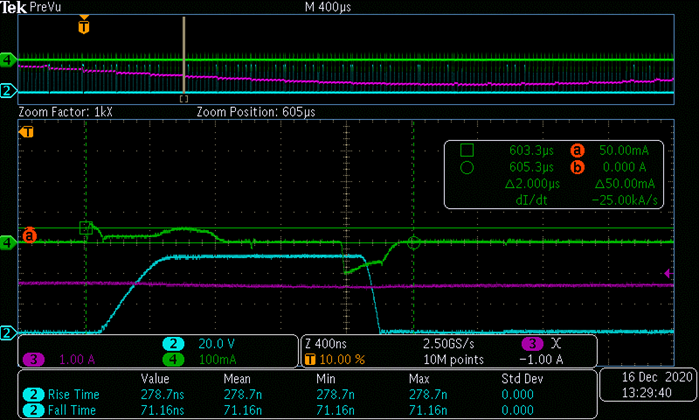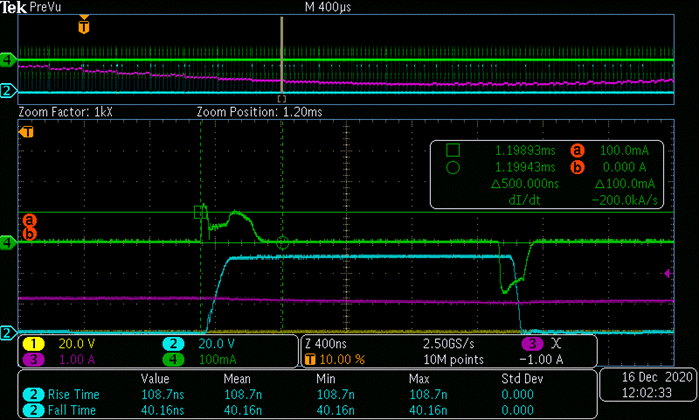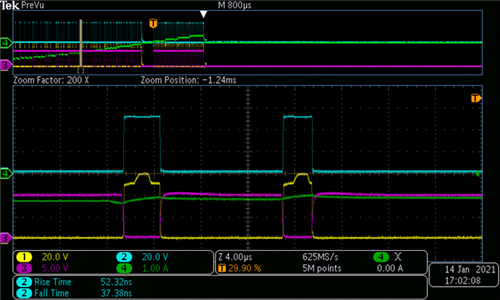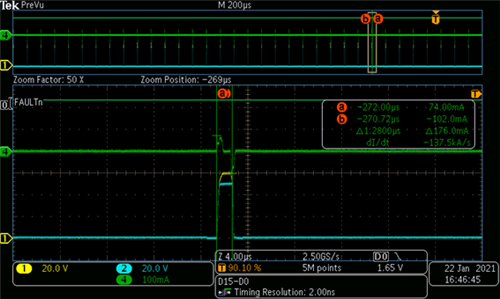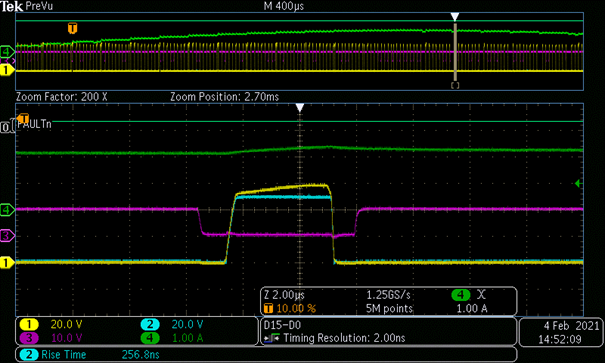Hello,
Some of our boards using the DRV8711 trigs OCP errors (50/2000 boards).
These boards operate normally few months, then errors happens every time at the same motor position (ie: when A phase become positive)
For each boards concerned by this issue, we measure abnormally long rise time at the output of one high side MOSFET (more than 300ns when all other are less than 180ns).
Below our standard DRIVE register parameters:
00 --OCP OCP threshold
00 --OCPDEG OCP deglitch time
01 --TDRIVEN Low-side gate drive time
01 --TDRIVEP High-side gate drive time
00 --IDRIVEN Low-side gate drive peak current
00 --IDRIVEP High-side gate drive peak current
Using these new parameters improve but the issue still exist:
01 --OCPDEG OCP deglitch time
11 --TDRIVEN Low-side gate drive time
11 --TDRIVEP High-side gate drive time
No change when we replace the MOSFET.
But rise time is then fine after replacing the DRV8711 by a brand new.
See attached schematic CN6-22D_SCH_DRVX+Z.pdf
See attached oscilloscope screenshots from the same board:
- X axis_Q24 MOSFET_bad DRV8711.png è rt=311ns
- X axis_Q24 MOSFET_brand new DRV8711.png è rt=165ns
How to explain the rise time has increased since the beginning of the life cycle?
Below part marking of the DRV8711 concerned by the issue:
83TG4 CGLY (see attached picture 102X.jpg)
82TG4 CPYH (see attached picture 590X.jpg)
82TG4 CPYJ (see attached picture 763X.jpg)
Could you detail date code and numbering and confirm these parts are right?
Any suggestion, workaround, explanation?
Many thanks in advance











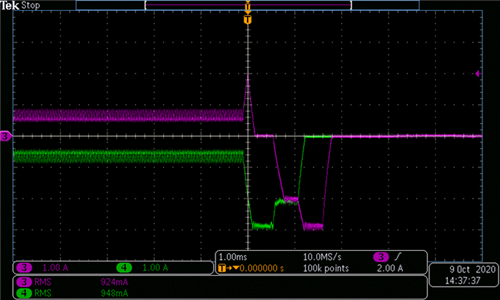
 board n°1016 FAULTn when CH4 current rise positive
board n°1016 FAULTn when CH4 current rise positive board n°1152 FAULTn when CH4 current rise positive
board n°1152 FAULTn when CH4 current rise positive















